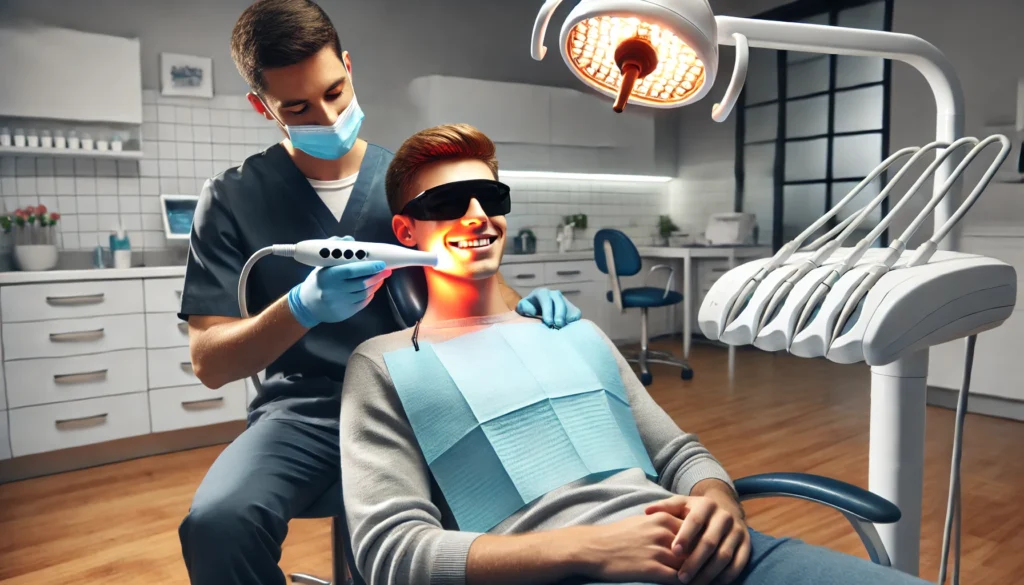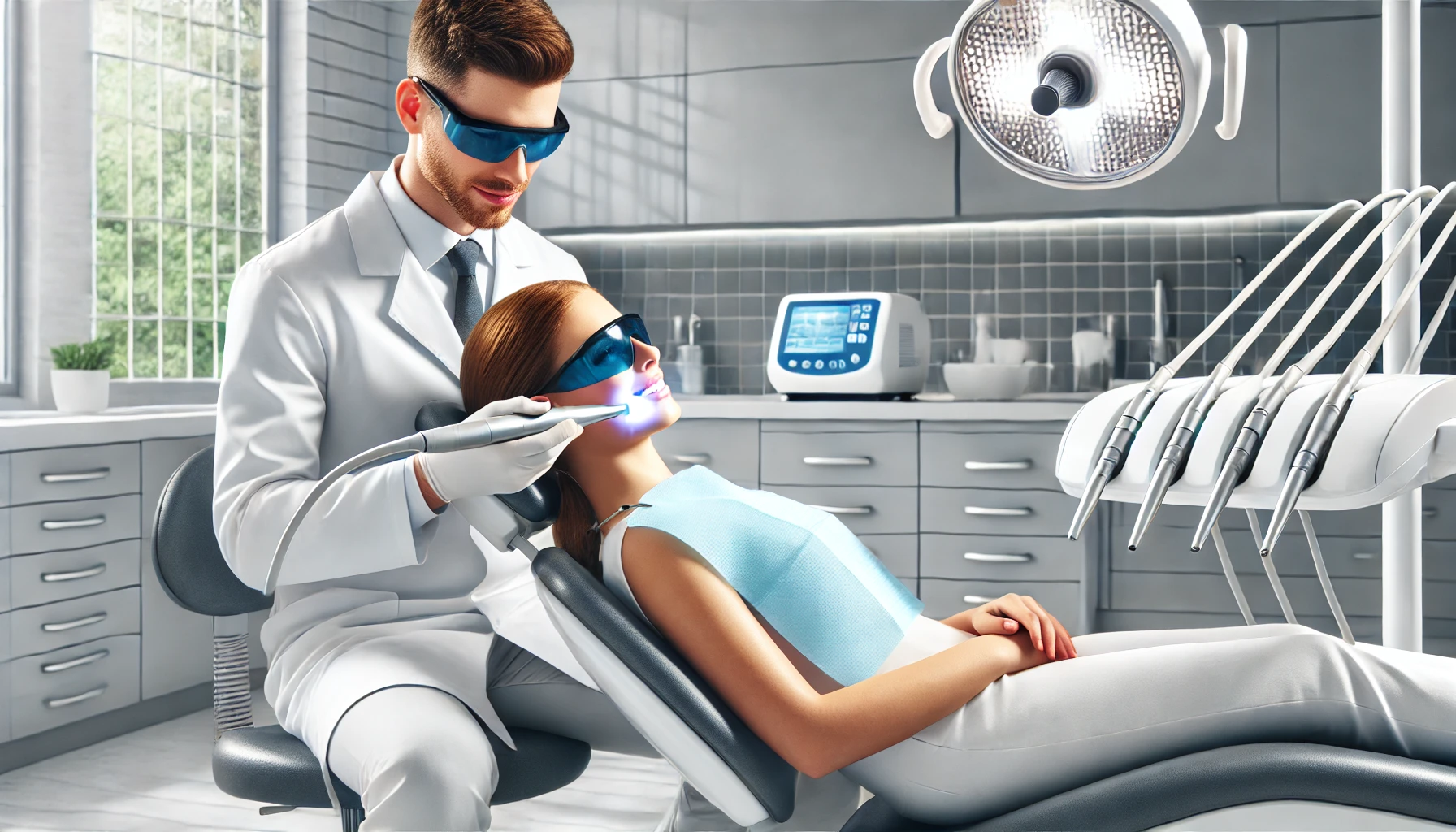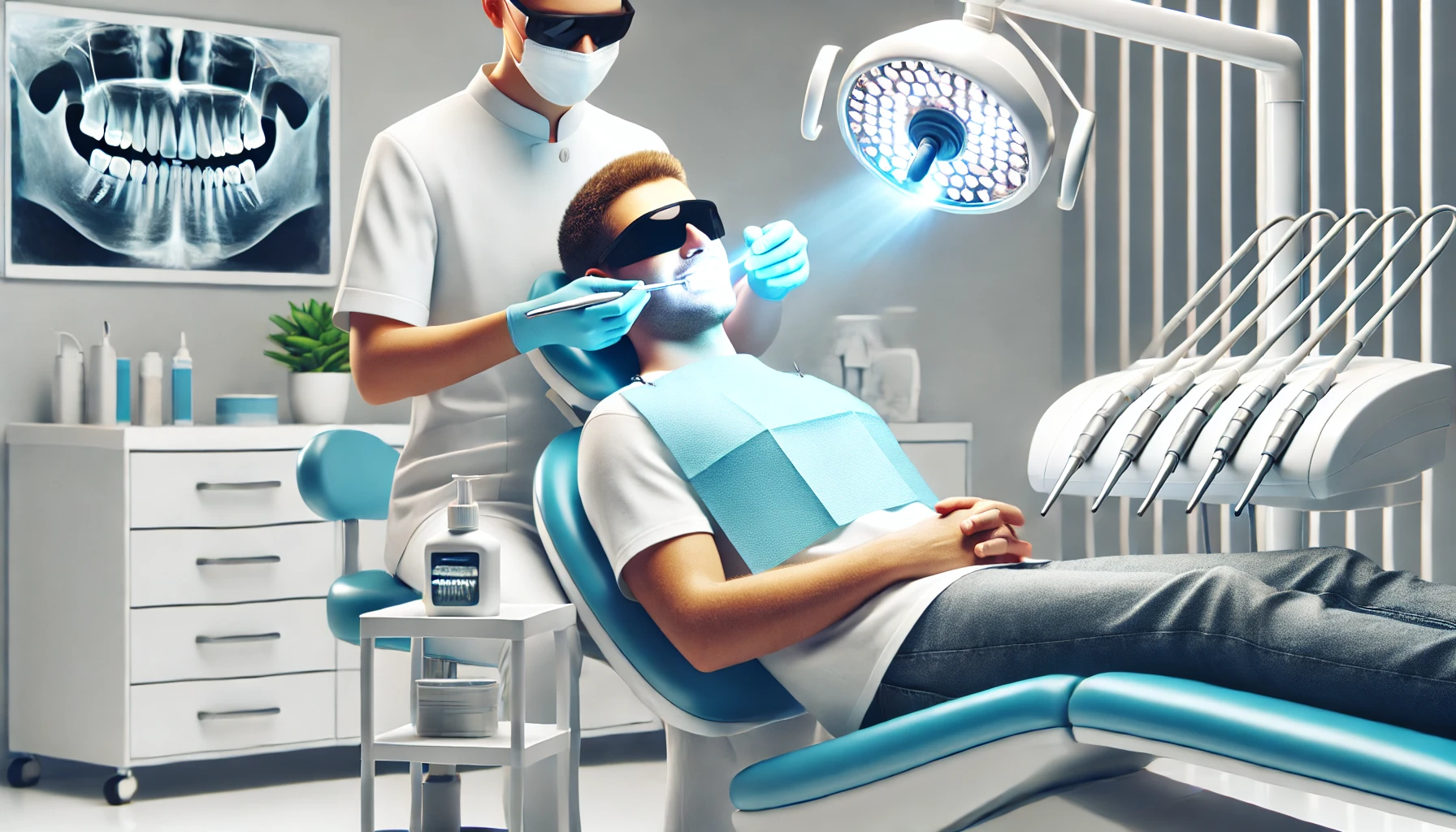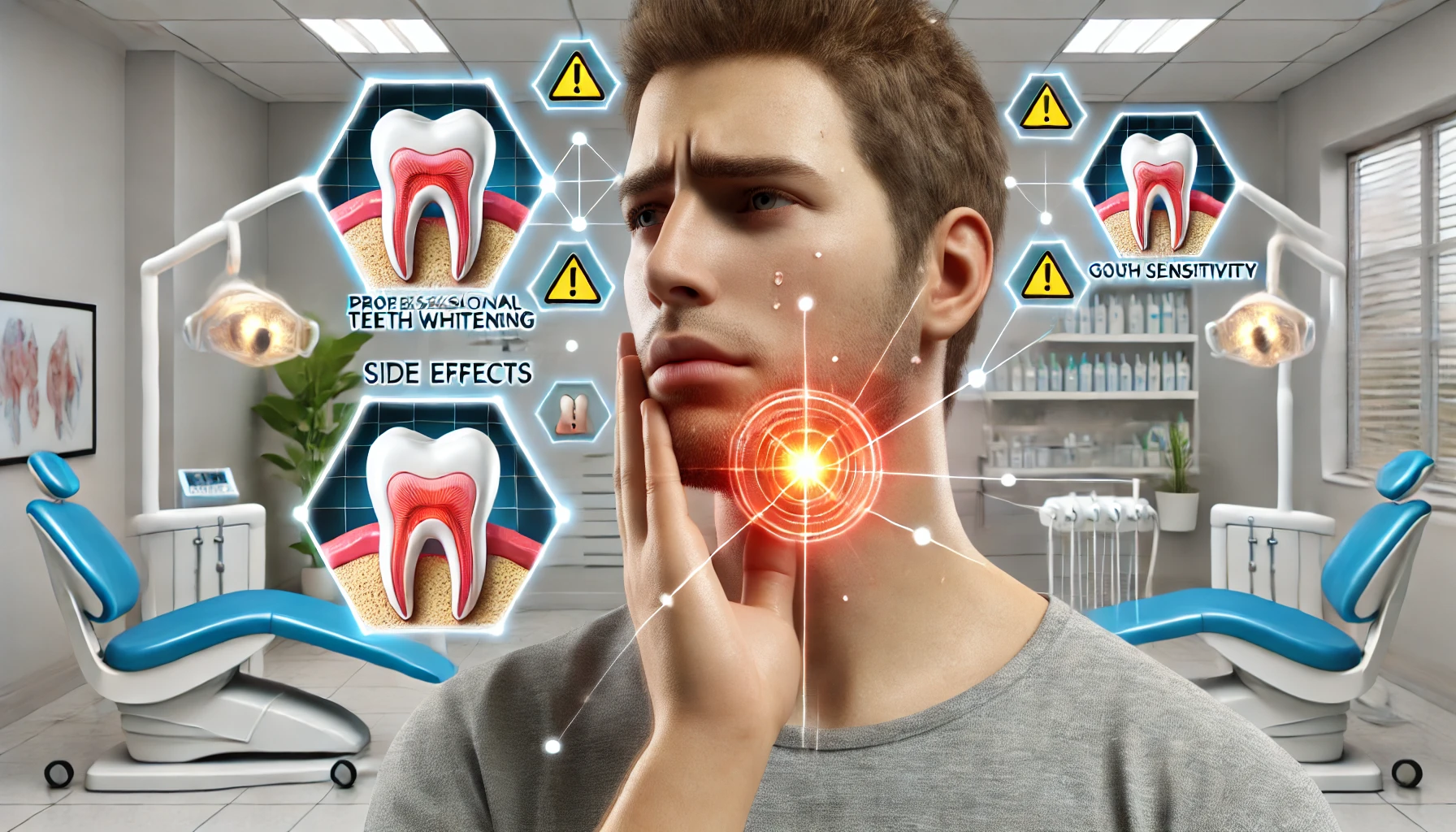
If you are interested in enhancing your smile, professional teeth whitening might be the perfect solution for you. This guide delves into a range of topics, including the benefits of professional treatments and the various methods available, such as in-office procedures and at-home options.
What To Expect During A Professional Teeth Whitening Session
After reading this guide, you will clearly understand what to expect during a typical whitening session, the potential side effects to be aware of, and tips on how to maintain your impressive results. Whether you are getting ready for a special occasion or simply wish to boost your everyday confidence, this guide will provide you with the information you need.
What Is Professional Teeth Whitening?

Professional tooth whitening is a cosmetic dentistry procedure designed to enhance your smile by effectively reducing discolouration and stains on your teeth.
This process usually involves the use of advanced whitening agents, such as hydrogen peroxide or carbamide peroxide, which are applied during a session at your dentist’s practice.
The primary goal is to achieve noticeable results while ensuring the patient’s safety and comfort throughout the procedure. Learn how much teeth whitening costs here.
Why Should You Consider Professional Teeth Whitening?
Considering professional teeth whitening can be a wise choice for individuals seeking to enhance their smile, boost their confidence, and achieve aesthetic improvements.
Unlike over-the-counter solutions, professional treatments offer personalised options that target specific staining factors, ensuring you experience noticeable and longer-lasting results.
Many patients find that they feel more confident after their appointments, as the treatment effectively removes stains caused by food, beverages, smoking, and the natural ageing process.
What Are the Benefits of Professional Teeth Whitening?
The advantages of professional teeth whitening are numerous and can greatly enhance both dental aesthetics and overall oral health.
Many patients find in-clinic procedures particularly effective, as they often employ advanced dental technology to achieve optimal whitening results in a relatively short time. Treatment options are customised to meet individual needs, ensuring maximum comfort throughout the entire process.
With professional oversight, patients gain the assurance that their specific dental conditions are carefully considered, promoting both effectiveness and safety during treatment. It’s worth noting that the whitening agents used are specially formulated to prioritise enamel safety, minimising the risk of sensitivity that can sometimes arise from over-the-counter products.
Furthermore, patients benefit from comprehensive education regarding maintenance and care after treatment, equipping them with the knowledge needed to maintain their radiant smiles for a longer duration. This holistic approach not only leads to quicker and more dramatic transformations but also encourages a deeper understanding of their overall dental health.
How Does Professional Teeth Whitening Work?
Professional teeth whitening involves a well-structured series of steps aimed at safely and effectively brightening your smile.
The process begins with a comprehensive oral examination conducted by your dentist or dental hygienist, who will develop a personalised treatment plan tailored to your individual needs and the shade of your teeth.
Once your gums and lips are properly prepared, a whitening gel is applied to your teeth. This gel is often activated by a special light or UV light to enhance the effectiveness of the whitening agents.
What Are the Different Types of Professional Teeth Whitening?
When contemplating professional teeth whitening, it’s essential to recognise the various types available to suit your individual needs and preferences.
The main options include:
- In-office treatments carried out by a dentist
- At-home kits recommended by a dental professional
- Combination approaches that utilise both methods for the best possible results
Each option offers its own benefits, enabling patients to select one that aligns with their lifestyle, desired outcomes, and any specific concerns they may have.
1. In-Office Teeth Whitening
In-office teeth whitening has become a popular option for individuals looking for immediate results in a controlled setting, typically conducted by a qualified dentist within a dental clinic. This procedure employs professional-grade whitening agents, often enhanced by advanced dental technology, such as light activation, to facilitate the rapid and effective removal of stains and discolouration.
During the appointment, which usually lasts one to two hours, patients can anticipate a comprehensive consultation followed by the application of the whitening solution to their teeth. The process is designed with patient comfort in mind, as dental professionals are well-trained to address any concerns that may arise. Many patients notice the whitening effects almost immediately, and these results can last for several months, depending on personal oral hygiene practices and lifestyle choices.
Incorporating regular dental care, including cleanings and check-ups, will further extend the longevity of the whitening results, making this procedure a valuable investment for those seeking a brighter smile.
2. At-Home Teeth Whitening
At-home teeth whitening offers a convenient option for those who wish to achieve a brighter smile at their own pace. This method typically involves using custom-fitted whitening trays filled with professional whitening gel, allowing individuals to follow a treatment plan tailored to their specific needs and daily routines.
To achieve the best possible results, it is essential to adhere diligently to the application guidelines and understand the potential risks involved. Patients should be well-informed about the importance of following instructions precisely, as improper usage can lead to uneven results or increased sensitivity.
While many people appreciate the effectiveness of at-home whitening kits, it is crucial to recognise that some individuals may experience side effects, such as gum irritation or tooth sensitivity, during or after the whitening process.
Therefore, finding a balance between achieving a radiant smile and maintaining good oral health is vital when making decisions about at-home whitening treatments.
3. Combination Teeth Whitening
Combination teeth whitening combines the advantages of both in-clinic procedures and at-home kits, offering a comprehensive solution for individuals seeking optimal results. Typically, this approach begins with an in-clinic session that delivers immediate whitening effects, followed by a personalised at-home care regimen designed to maintain and enhance those results over time.
The in-clinic treatment utilises stronger agents to effectively break down stains, while the at-home kits are specifically formulated for ongoing maintenance and touch-ups. This combination not only provides flexibility tailored to individual schedules but also maximises the potential for whitening.
Consistent at-home care, such as using specialised whitening toothpaste and steering clear of stain-inducing foods, is essential for ensuring the longevity of that bright smile.
Regular dental appointments play a critical role as well, allowing for monitoring of overall oral hygiene. These visits provide opportunities for professional cleanings and adjustments to the care routine, which are vital for maintaining both a dazzling appearance and overall dental health.
What Can You Expect During a Professional Teeth Whitening Session?

In a professional teeth whitening session, patients can anticipate a well-organised and supportive experience designed to prioritise both comfort and effectiveness.
The process usually starts with a consultation and evaluation to understand individual needs. After this assessment, a mouthguard is placed to protect the gums and lips during the treatment.
Next, the whitening gel is applied, and often, it is activated using UV light to boost its effectiveness, ensuring the best possible results.
1. Consultation and Evaluation
The consultation and evaluation phase serves as a vital step in the professional teeth whitening process. During this stage, your dentist performs a comprehensive oral examination to determine the most suitable approach tailored to your specific needs. This pre-treatment assessment is essential for identifying any underlying oral health issues and evaluating the current shade of your teeth, ensuring that the whitening procedure will be both safe and effective.
In this phase, you can expect your dentist to inquire about your oral hygiene habits, any previous dental procedures you have undergone, and any specific concerns you may have regarding tooth discolouration. It is also an excellent opportunity for you to express your aesthetic goals, such as the desired shade of your teeth and any upcoming events that might motivate you to seek treatment.
Such open communication lays the groundwork for the treatment plan, enabling the dentist to make personalised recommendations that prioritise both safety and effectiveness. Discussing options like in-clinic whitening or take-home kits can significantly influence your treatment expectations, helping to ensure the best possible results while preserving optimal oral health.
2. Preparation and Protection of Gums and Lips
Before applying the whitening gel, it is crucial to properly prepare to protect sensitive areas such as the gums and lips. This typically involves placing a mouthguard or barrier over the gums, which helps to prevent irritation and ensures that the whitening agent is applied solely to the teeth for optimal results.
This preparation not only protects the soft tissues but also significantly enhances overall patient comfort during the whitening process. By utilising advanced dental technology, practitioners can personalise the treatment to address individual sensitivities, maximising effectiveness while minimising discomfort.
Patients also play a vital role in their experience; discussing any previous sensitivity issues with their dental professional can lead to customised solutions. Additionally, maintaining good oral hygiene and adhering to pre-treatment instructions will further improve the results, contributing to a more pleasant and satisfying whitening journey.
3. Application of Whitening Gel
The application of the whitening gel marks a crucial step in the professional teeth whitening process, during which the dental team carefully applies the whitening solution to your teeth. Depending on the selected method, the gel may contain potent whitening agents such as hydrogen peroxide or carbamide peroxide, designed to effectively break down stains and discolouration while prioritising patient comfort.
The concentration of these ingredients is essential for achieving the desired results. Higher concentrations can yield quicker and more noticeable effects, but they must be applied with caution to minimise sensitivity. Throughout the treatment, the dentist monitors the process closely, adjusting the timing and application as needed to ensure both safety and optimal results.
After the procedure, the duration of the whitening effects can vary significantly based on individual habits, including dietary choices and oral hygiene practices, both of which are crucial for maintaining that bright smile. Proper aftercare, which may include the use of prescribed maintenance products, can enhance the longevity of the results, allowing for a radiant grin that endures.
4. Activation of Whitening Gel
The activation of the whitening gel is commonly achieved through light activation techniques, such as UV light, which significantly enhances the effectiveness of the whitening agents. This step is essential, as it can considerably accelerate the whitening process and lead to a more noticeable change in tooth shade within a shorter timeframe.
During the light activation stage, the whitening gel is energised, allowing it to penetrate deeper into the enamel and assist in breaking down stains. Patients may experience a mild warmth or a slight tingling sensation as the light works, but any discomfort is generally minimal. Safety precautions, such as providing protective eyewear for patients and carefully calibrating the light intensity, create a secure environment.
This approach not only amplifies the whitening results but also reduces the treatment duration, greatly enhancing the overall patient experience and satisfaction with the outcomes.
5. Multiple Sessions (if necessary)
In some instances, achieving optimal results from professional teeth whitening may necessitate multiple sessions, particularly if the initial staining is significant or if the desired level of whiteness is not attained after the first visit. Your dentist will provide a follow-up treatment plan designed to ensure the best possible outcomes and to maintain results over time.
This plan will not only consider your specific whitening goals but will also take into account your dental health history and lifestyle choices, as these factors can influence the effectiveness of the treatments.
Patient expectations are crucial in this process; some individuals may wish for a brighter smile than they initially expected, which may lead to the need for additional visits to reach their ideal outcome.
Regular follow-up care is vital, as it helps sustain the results and prevent any re-staining that might occur due to dietary habits or aging. By prioritizing these follow-up sessions, individuals can enjoy a radiant smile that lasts longer.
What Are the Possible Side Effects of Professional Teeth Whitening?

Professional teeth whitening is generally a safe procedure; however, it is important to recognise that some patients may experience side effects.
Common side effects include temporary tooth sensitivity and gum irritation, but these can typically be managed with proper aftercare and the guidelines provided by your dentist.
It is essential to address any concerns during your consultation to ensure a comfortable and positive experience throughout the process.
1. Tooth Sensitivity
Tooth sensitivity is a commonly reported side effect following professional teeth whitening, particularly when strong whitening agents such as hydrogen peroxide are used. Patients may experience temporary discomfort during or after the treatment, but this usually subsides with proper aftercare and the recommendations provided by their dentist.
The sensitivity can be attributed to the impact of these agents on the tooth’s enamel, which may become temporarily weakened or more porous. This allows external stimuli to interact with the nerves inside the teeth. Additionally, individual variations in enamel thickness and overall oral health can result in differing levels of sensitivity among patients.
To alleviate discomfort, it is essential to adhere to a gentle oral care routine following the treatment. This includes using fluoride-based toothpaste and mouth rinses that help protect enamel.
Some individuals may find it beneficial to use desensitising products before or after whitening, and it is advisable to avoid very hot or cold foods that could trigger sensitivity.
Regular check-ups with a dental professional can be instrumental in developing a personalised strategy for optimal care during these sensitive times.
2. Gum Irritation
Gum irritation can sometimes occur during professional teeth whitening, typically due to the whitening gel coming into contact with the gum tissue. Fortunately, protective measures such as the use of a mouthguard significantly reduce the risk of irritation; however, some patients may still experience mild discomfort.
It is important for patients to understand how gum irritation can present itself during treatment. Symptoms such as redness, swelling, or a tingling sensation are common and can impact overall comfort.
To address these concerns, dental professionals take care to implement protective barriers that shield the gums from harsh chemicals. Additionally, patients can manage any post-treatment discomfort by rinsing their mouths with salt water or applying a soothing gel that their dentist recommends.
Maintaining open communication with dental staff regarding any sensitivities is essential for enhancing the overall experience and ensuring that patient comfort remains a top priority during dental appointments.
3. Uneven Results
Uneven results can sometimes occur after professional teeth whitening, especially if there are variations in tooth shade or if there are pre-existing dental restorations, such as fillings or crowns, that do not react to whitening agents in the same manner. To address this, a dentist will develop a personalised treatment plan designed to achieve consistent results across your smile.
Several factors can contribute to these discrepancies. For example, the age of existing dental restorations and differences in enamel thickness can lead to noticeable contrasts in tooth colour.
Dentists typically recommend starting with a comprehensive examination to identify any underlying issues. This is often followed by a strategic approach that may include touch-up treatments or specific whitening techniques tailored to the patient’s unique needs.
Ongoing maintenance is also vital. Scheduling regular follow-up care, which includes professional cleanings and receiving guidance on home care, can help preserve the cosmetic results achieved.
Ultimately, personalised treatment not only enhances visual appeal but also addresses the specific dental landscape of each individual.
How Long Do the Results of Professional Teeth Whitening Last?
The outcomes of professional teeth whitening can differ depending on individual circumstances, such as lifestyle choices and oral hygiene habits.
Generally, patients can anticipate that their enhanced smiles will last for several months to a few years, as long as they maintain proper care and steer clear of staining elements like smoking and certain foods and drinks.
How to Maintain the Results of Professional Teeth Whitening?
Maintaining the results of professional teeth whitening is crucial for preserving your newly brightened smile. This involves adopting effective oral hygiene practices and making some lifestyle changes.
Regular dental check-ups, a solid home care routine, and being aware of staining factors—such as certain foods, drinks, and habits—can significantly prolong the effects of your whitening treatment.
Frequently Asked Questions
What to Expect During a Professional Teeth Whitening Session?
During a professional teeth whitening session, you can expect to sit in a dentist’s chair for about an hour while the whitening process takes place. Your dentist will apply a whitening gel to your teeth and use a special light to activate the gel.
Is the Teeth Whitening Procedure Painful?
No, the teeth whitening procedure itself is not painful. You may experience some sensitivity during or after the session, but this is temporary and should subside within a day or two. If you have any concerns, be sure to discuss them with your dentist before the procedure.
Will My Teeth Become Extremely White After One Session?
The results of a professional teeth whitening session will depend on the current shade of your teeth and the level of discoloration. While you will see a noticeable difference after the first session, multiple sessions may be needed to achieve your desired level of whiteness.
How Do I Prepare for a Professional Teeth Whitening Session?
Ahead of your teeth whitening session, it is recommended to brush and floss your teeth thoroughly. You should also avoid consuming any staining foods or drinks, such as coffee, red wine, or berries, for at least 24 hours before your appointment. This will help ensure the best results.
Are There Any Side Effects from Professional Teeth Whitening?
The most common side effect of professional teeth whitening is temporary tooth sensitivity. This may also come with some gum irritation, but these effects are typically mild and subside within a day or two. If you experience any severe side effects, be sure to contact your dentist.
How Long Do the Results of Professional Teeth Whitening Last?
The results of professional teeth whitening can last anywhere from 6 months to 2 years, depending on your oral hygiene habits and lifestyle choices. To maintain your white smile, it is important to brush and floss regularly and avoid consuming staining foods and drinks. Touch-up sessions may also be recommended by your dentist.





